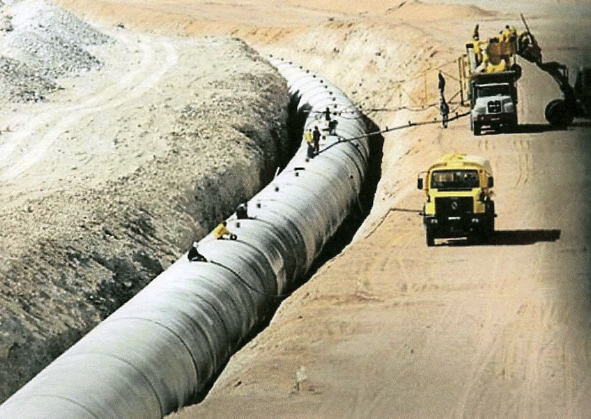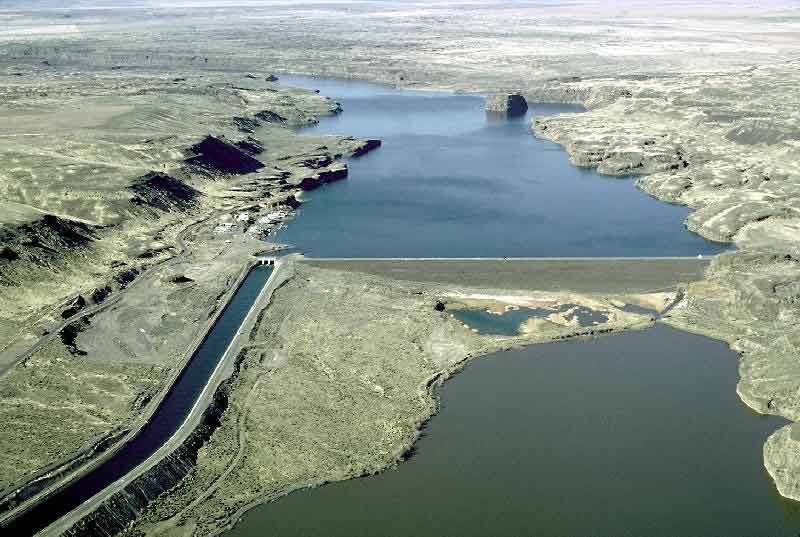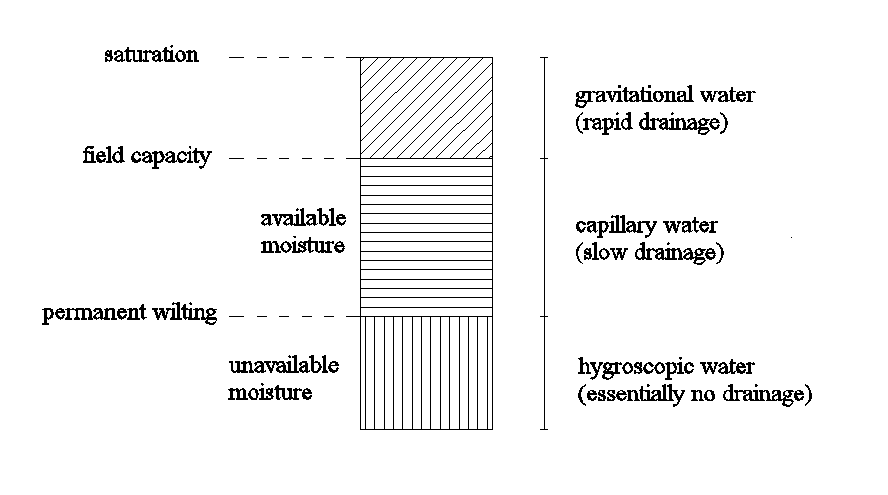Water is the most important element for the growth of plants. Different types of plants require different quantities of water at different times during their growing period. Water is supplied to the plants through direct rain or flood waters of the rivers which inundate large land areas during floods. As these are natural processes, there may be heavy rain damaging the crops or creating a scarcity of supplying water for the crops. So an artificial method is needed by which water can be collected and stored so that it can be used when necessary. This method of science is termed “irrigation”. There are various types of irrigation methods. Irrigation system definition, irrigation history, irrigation scheduling approaches, and irrigation examples are briefly described below.
What is Irrigation System?
Irrigation may be defined as the science of the artificial application of water to the land in order to fulfill the water requirements of the crops throughout the crop period for the full nourishment of the crops. Nutrients to the crops may also be applied through irrigation.
Irrigation Synonym: rinse, wash, wash out, inundate, flow, soak, etc.
Irrigation antonym: Dry, drought, drainage.
Crop period: The time period between the instant of sowing seeds to the instant of harvesting the plants is called crop period.
Irrigation water should be supplied as soon as the moisture falls up to the optimum level. The quantity of water that produces the maximum yield of the crops is termed as optimum water level. More or less than the optimum level results in a reduction of the yield.

History of Irrigation
Agriculture is the oldest way to serve food to humans. Ancient people from different regions used the irrigation system to supply water to their agricultural lands. At that time irrigation was mainly the control of water flow. Mesopotamia and Egypt were the most successful user of the irrigation system. A brief description of the history of irrigation is stated below.
Mesopotamia
Mesopotamia (at present Iraq and some parts of Iran) was familiar as the land of two rivers of Tigris (to the north) and Euphrates (to the south). As rains were seasonal, irrigation in Mesopotamia was extremely necessary for its agriculture. Another problem was that Tigris and Euphrates carried a large amount of silt which caused floods. So, a system was developed for controlling the direction and flow of water. Canals and irrigation ditches were also built for supplying water to the fields. A brief idea about the Mesopotamia irrigation system can be found from this YouTube link
Egypt
The irrigation system of ancient Egypt was mainly based on the river Nile. Water was supplied to the agricultural lands from the Nile. The uncertain level of water flowing in the Nile was the main problem for Egyptian agriculture. During high and low levels of water flow, floods and scarcity of water were very common. Small basins and canals were built to collect water for irrigation purposes. Different regions like Mexico, and North America were also familiar with the irrigation system.
Approaches for Irrigation Scheduling
The importance of irrigation is very high for mankind. Irrigation scheduling determines when and how much water has to apply to the field. Scientists and farmers use several approaches for scheduling irrigation. These are as follows.
-
Soil moisture depletion approaches
For scheduling irrigation, a good criterion of available soil moisture in the root can be used. The amount of water that lies between the field capacity and the permanent wilting point is called the available moisture content.
Fig: Classes and availability of soil water The moisture content near the wilting point is not readily available to the plant for subsequent use. Normally 75-80 percent of the available moisture is most easily extracted by plants which are termed as readily available moisture. To maintain crop growth properly, irrigation should be started when 50 percent of the available water is depleted in the soil root zone and it is continued until the optimum level is reached. Soil moisture can be measured by various methods such as the gravimetric method, electro-resistance blocks, tensiometer, etc.
-
Plant basis
Plants can be used as a guide for scheduling irrigation. Plants will reflect the deficiency of water through various symptoms such as curling or rolling of leaves and change in foliage color. All of these symptoms are indication that the plant requires water. Plant basis irrigation scheduling has the only drawback that it does not give the quantitative estimation of moisture deficiency.
-
Climatological approach
Climate is the main controlling factor for evapotranspiration. Climatological data is used for estimating the amount of lost water by evapotranspiration (ET). Irrigation is scheduled when ET reaches a particular level. The same amount of ET or fraction of ET is supplied as irrigation water. There are different methods of climatological approaches such as IW/CPE method and the pan evapotranspiration method.
-
Critical growth approach
In each crop, there are critical periods or moisture-sensitive periods. Generally, crop growth stages at which moisture deficiency leads to irreversible yield loss are termed critical periods. Whenever soil moisture is depleted during critical periods, irrigation must be scheduled. In case of limited water supply conditions, irrigation is scheduled only for critical periods, and irrigation is skipped for noncritical conditions.
-
Plant water status itself
The latest approach for irrigation scheduling is the plant water status. As the plant is a good indicator of available soil moisture and climate factors, plant water status itself can be used for irrigation scheduling. This approach is not yet so common for the lack of standard and low-cost techniques to determine plant water status.
Irrigation Projects
Following projects are examples of irrigation system design.
Great Man-Made River

The Great Man-Made River (GMR) in Libya is the largest irrigation project in the world. It is the largest underground pipe network that supplies water from the Nubian sandstone aquifer to the Sahara desert. The Nubian sandstone aquifer is the largest fossil water system which will take hundreds of years to deplete. This project was started in 1984 with five different phases funded by the Gaddafi-run government. It is in a stage of partial completion as three out of five phases have been completed.
Columbia Basin Projects
 Columbia basin project (CBP) is the largest irrigation project in the United States of America. Water is pumped from the Columbia River, carried to the main canals, stored in the reservoirs, and fed into the lateral irrigation canals. Though Congress authorized this project in 1943, its construction started after World War II.
Columbia basin project (CBP) is the largest irrigation project in the United States of America. Water is pumped from the Columbia River, carried to the main canals, stored in the reservoirs, and fed into the lateral irrigation canals. Though Congress authorized this project in 1943, its construction started after World War II.


